The aim of this web-based course on translation is to provide students preparing to translate for the first time, or to undertake a Year Abroad Translation Project with an emergency tool kit for approaching translation. The emphasis here is on translation from a second language to English; but the observations hold true for translating in the reverse direction. The Tool Kits are not a history of translation practice and theory, or a theory of translation.
Students considering a translation project, but who have not yet made a firm decision may also find the Tool Kits helpful since:
- they provide orientation about issues to consider whilst selecting a passage for translation, and before beginning the translation itself;
- they may help students decide what type of issues to discuss in the translator's note.
The Tool Kits are based on the Thinking Translation series, published by Routledge, for which there are books on Arabic, French, German, Italian, and Spanish; I have also made extensive use of Mona Baker's In Other Words, and almost all examples come from these indispensable manuals.
The opening premise is that translation is broadly similar to many other things that everyone does every day, such as working with everyday sign systems, and in interpreting and responding appropriately to such sign systems, and to other people. As a result of this, translation is seen as a language-based skill that can be practiced and improved through a strategic approach. Every linguist can translate, and all of us can become better translators by becoming aware of the processes involved, and by approaching translation exercises strategically and methodically.


